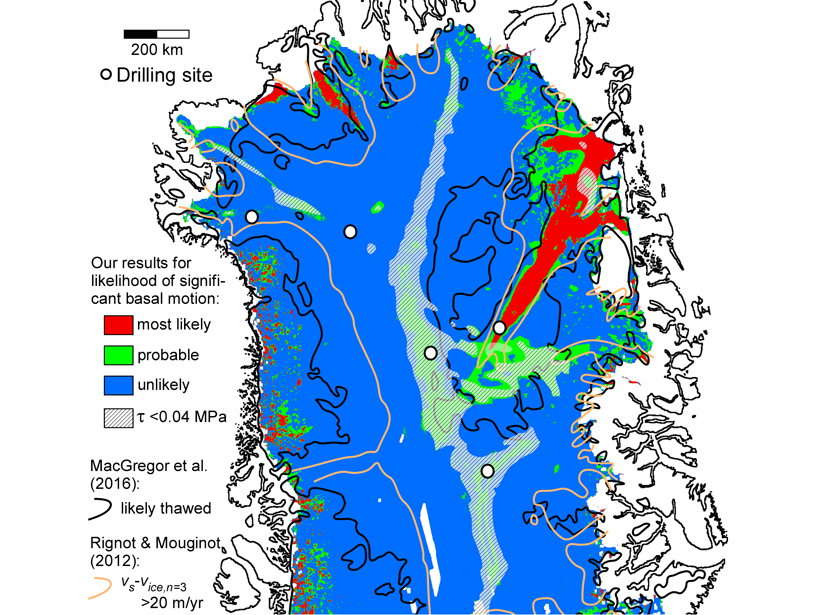Source: Geophysical Research Letters
Both surface melting and ice discharge from the Greenland ice sheet contribute to global sea level rise. While surface melting is easily mapped with satellite data, knowing how fast the ice flows is less clear. Ice flow results from two components: internal shearing of the ice and basal motion, or sliding of the ice along the base, especially when there is liquid water at the base. Recent studies have suggested that basal motion may dominate ice transport for the majority of the Greenland ice sheet. However, how soft or hard the ice is plays a role in this ice motion.
Using surface velocities from the MEaSUREs data set together with surface and bedrock elevation data, Bons et al. [2018] calculate the stresses that caused the observed flow in the northern part of the Greenland ice sheet. Results challenge previous assumptions as to how hard the ice is, suggesting the ice is softer than usually assumed, and that less of the ice at the base of the Greenland ice sheet is thawed. This has important implications not only for sea level rise, but also for the interpretation of radar stratigraphy.
Citation: Bons, P. D., Kleiner, T., Llorens, M.‐G., Prior, D. J., Sachau, T., Weikusat, I., & Jansen, D. [2018]. Greenland Ice Sheet: Higher nonlinearity of ice flow significantly reduces estimated basal motion. Geophysical Research Letters, 45. https://doi.org/10.1029/2018GL078356
—Julienne Stroeve, Editor, Geophysical Research Letters
Text © 2018. The authors. CC BY-NC-ND 3.0
Except where otherwise noted, images are subject to copyright. Any reuse without express permission from the copyright owner is prohibited.

